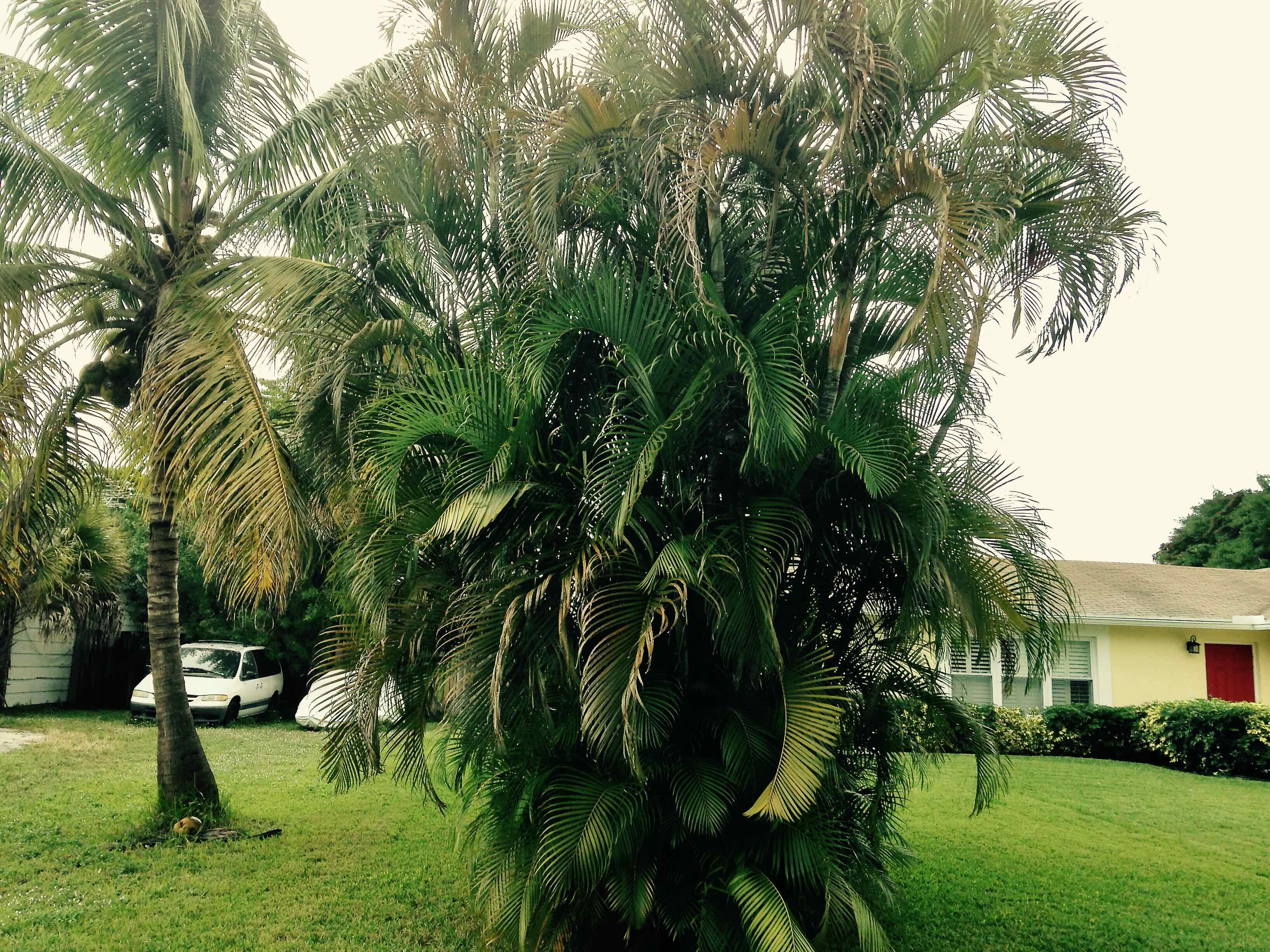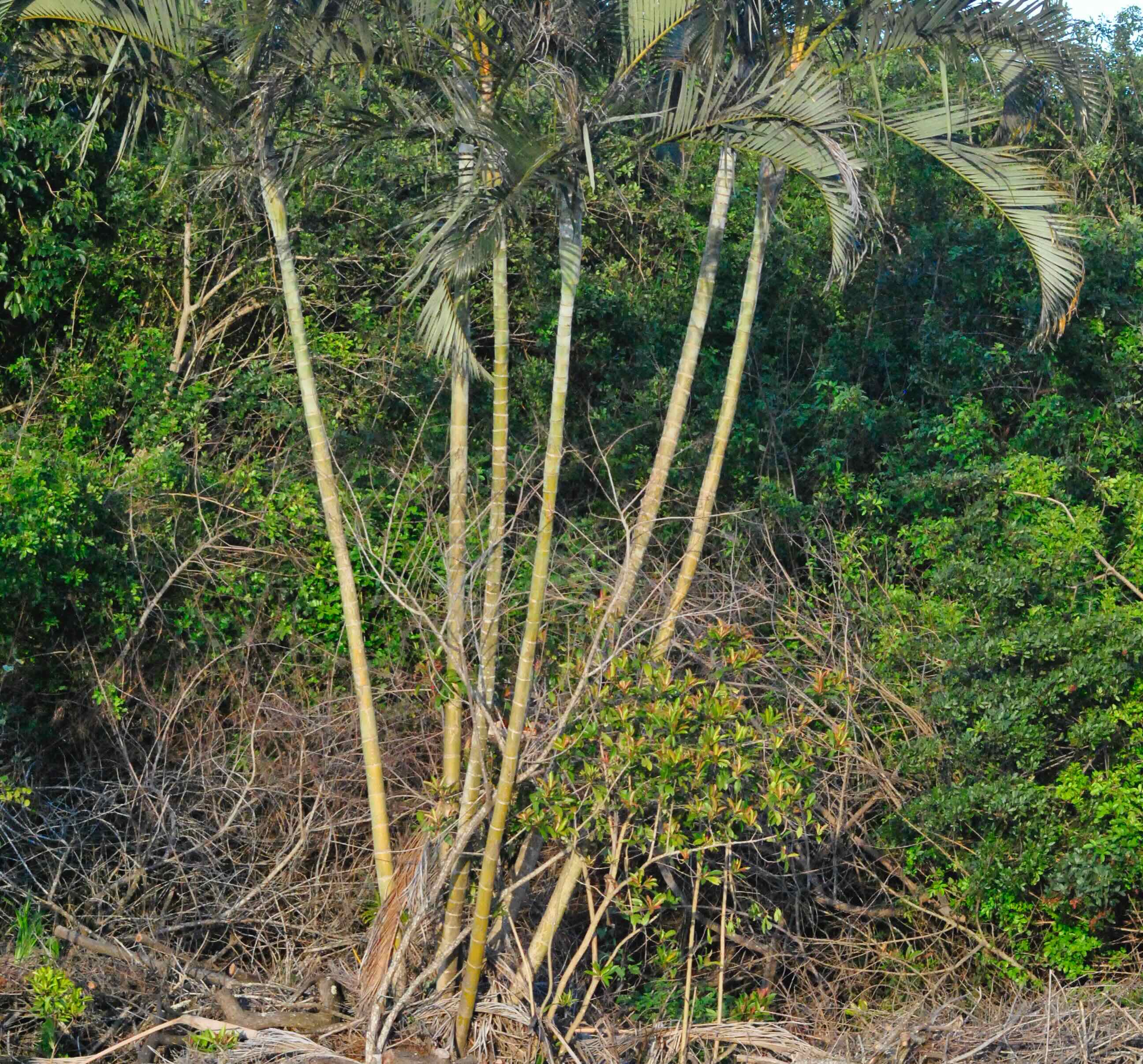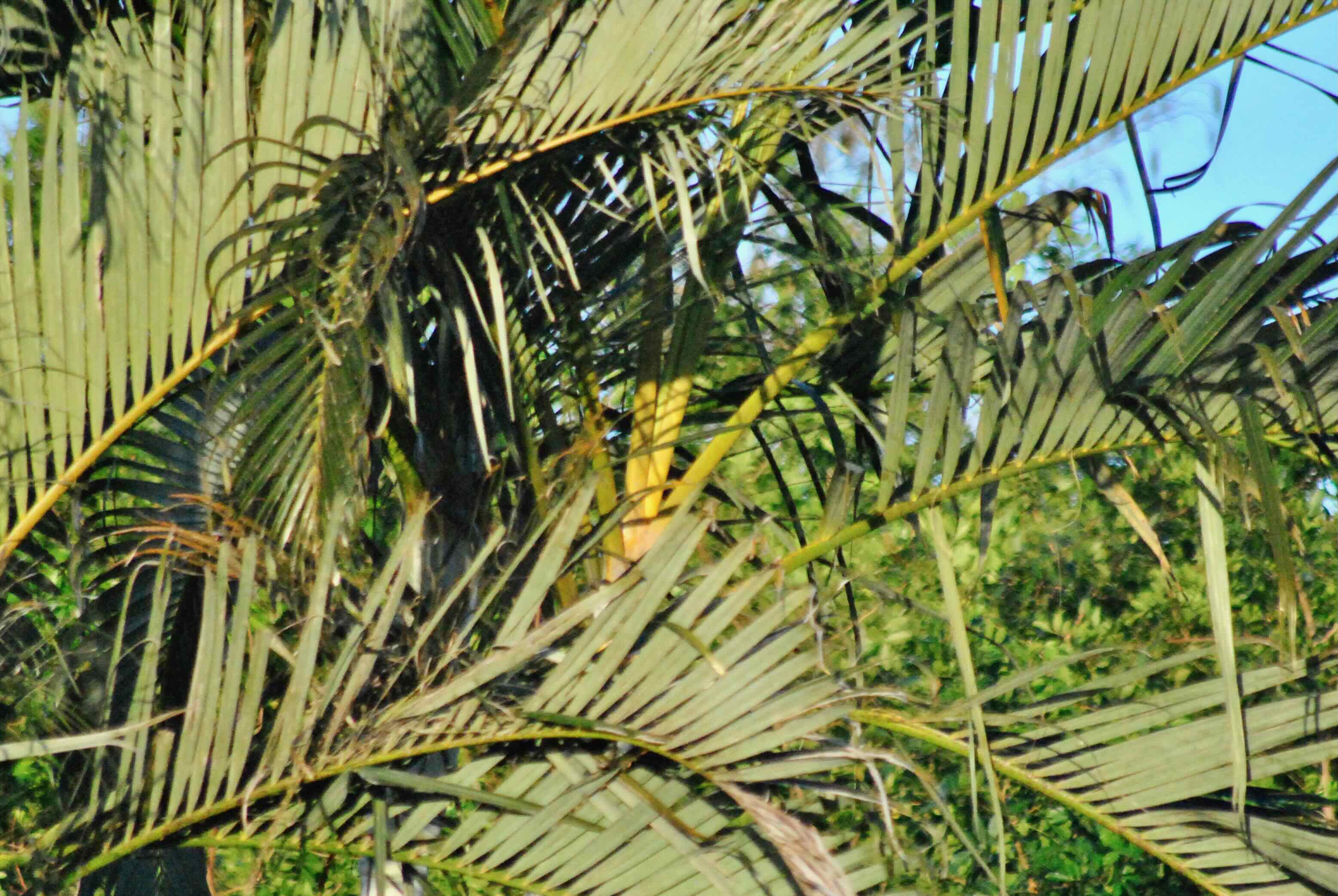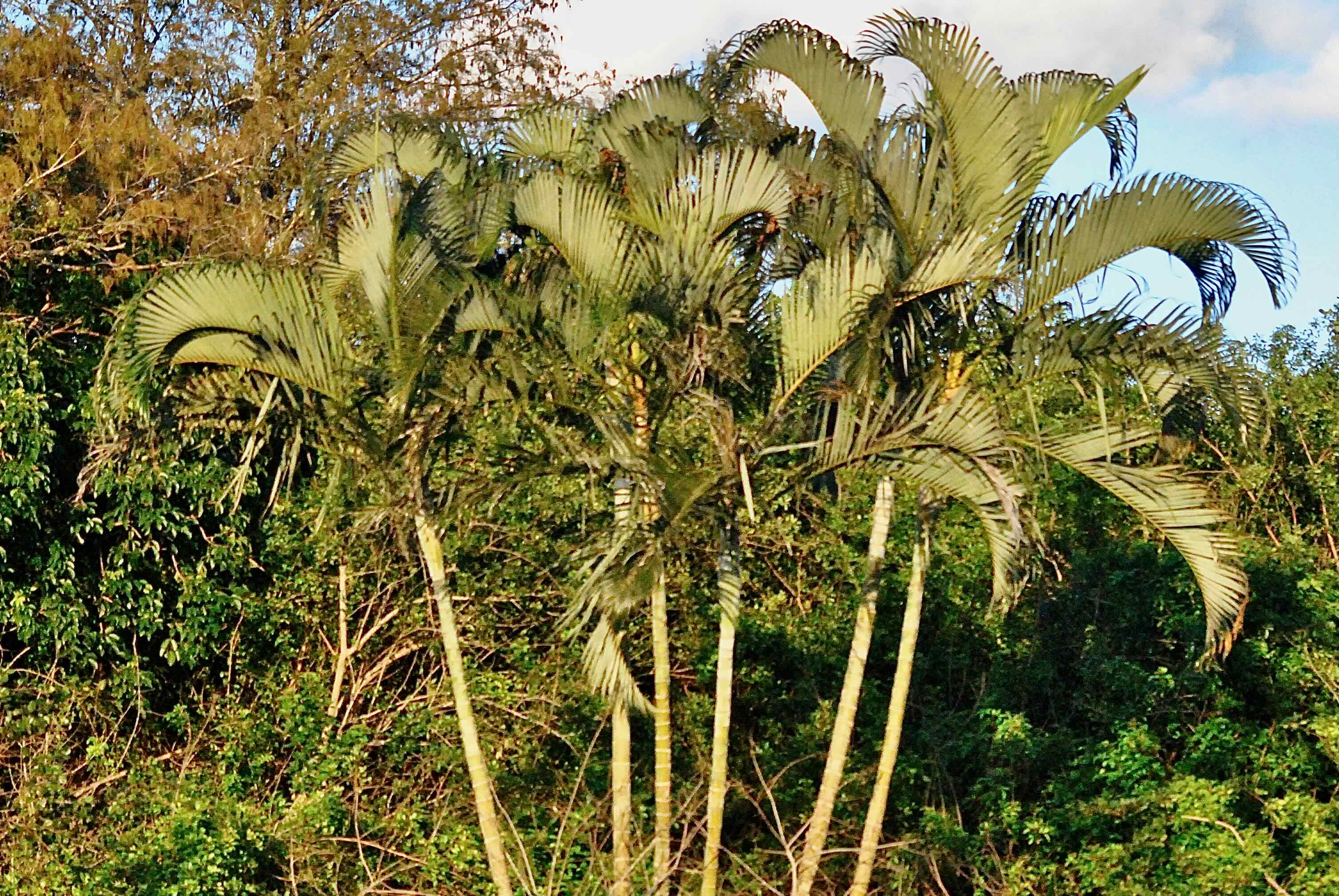
Areca palm photographed at Loxahatchee National Wildlife Refuge, Boynton Beach, Palm Beach County, in January 2016.
You’re looking at an endangered plant. Not endangered here in Florida, where it’s an import and fairly common landscaping plant, but endangered in its home range, eastern Madagascar.
Areca palm, Dypsis lutescens, is a multi-stemmed palm that’s popularly used as a specimen plant, screen or hedge. It’s fairly easy to grow and can take a fairly wide range of conditions. It even can be potted and grown indoors.
In Madagascar, however, loss of habitat has caused the areca palm to become endangered. Back home, it grows in hydric (wet) forests and and along river banks in a relatively narrow strip of land near the ocean. That limited range is part of its problem.
In Florida, it takes to mesic hammocks and disturbed wooded areas, according to the Institute for Regional Conservation.
Areca palm’s range in Florida stretches mainly along the Atlantic Coast roughly between Brevard and Miami-Dade counties and in the Tampa-St. Petersburg area along the Gulf Coast. Note that the range is for vouchered, or scientifically verified, specimens growing in the wild as opposed to ones growing in someone’s yard.
Areca palms are cultivated as landscaping plants in tropical and subtropical places around the globe, and is mostly well-behaved including in Florida. It does have the potential to become invasive and we’ll cover that in a bit.
It’s unknown exactly when areca palms were first brought to the United States, but it probably was some time in the late 19th century as a potential landscaping plant in Florida and other warmer parts of the country.
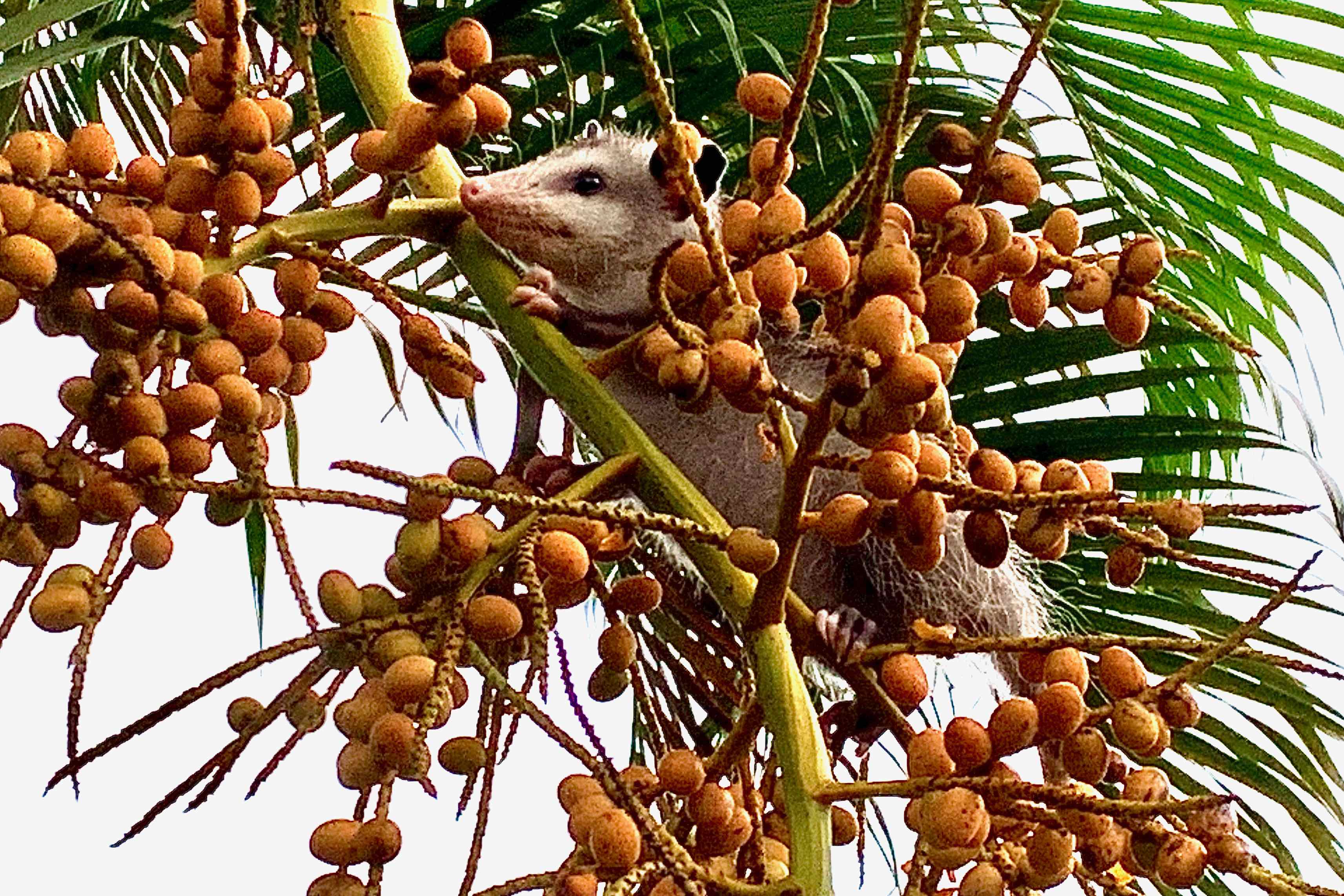 A Virginia opossum feasting on the nuts of an areca palm near Delray Beach.
A Virginia opossum feasting on the nuts of an areca palm near Delray Beach.Areca palms have limited cold tolerance — they’ll grow as far north as the USDA’s Zone 10, which pushes them maybe as far north as Volusia County.
They can be fairly tall, reaching 25 to 30 feet in the air, but more commonly half that. Fronds are six to eight feet long, with lance-shaped leaflets that can be two feet long and come to a sharp point. The stems, or trunks are relatively thin at about four inches in diameter.
Areca palms bloom spring through summer, producing a small nut-like seed.
The CABI Compendium notes that areca palms do have the potential to escape cultivation and form thickets in the wild and do damage to the environment, which is essentially the definition of an invasive. However, the only two places where it has been declared an invasive are Cuba and the French-owned island of Reunion. It is not considered invasive in Florida.
As noted above, areca palms take to full-sun or part-sun locations; when exposed to full sunlight, the fronds tend to turn yellow, giving rise to another of its common names, the yellow palm. The scientific species name, lutescens comes from the Latin meaning becoming yellow or yellowish.
Dypsis is a genus of 140 palm species mainly found in Madagascar, Tanzania and a few nearby islands. The word comes from the Greek Dypto, meaning to dive or plunge.
And while we’re discussing etymology, the common name areca is a Latinized version of the Portuguese version of the Malayalam (southern India) word meaning soft palm. It’s been attached to several mostly Asian palms. Why it applies to our guy isn’t apparent.
Other common names include the aforementioned yellow palm, butterfly palm, golden cane palm, yellow bamboo palm, Madagascar palm, cane palm and golden yellow palm. It is a member of Arecaceae, the palm family.
Arthur R. Marshall Loxahatchee National Wildlife Refuge

